Although alluded to by the name, Cedar Bog is not actually a bog. This site, located in Urbana Ohio, is actually what is known as a fen. One thing we learned at this beautiful preserve’s nature center is that bogs clog, while fens flush. This means that a bog does not have a place for the plants and water to escape; rather, the dead plants sink to the bottom, and the water is not very clean. On the other hand, fens do have an exit, through small streams. The water also contains dissolved limestone, which makes the water clearer than a bog. Specifically with Cedar Bog, there are three ways that water reaches the fen. There are two end moraines (caused by glaciers) on either side of the site, deep groundwater from the now-buried Teays River, and surface runoff.
My assignment this week was to find two facultative wetland shrubs at the site.
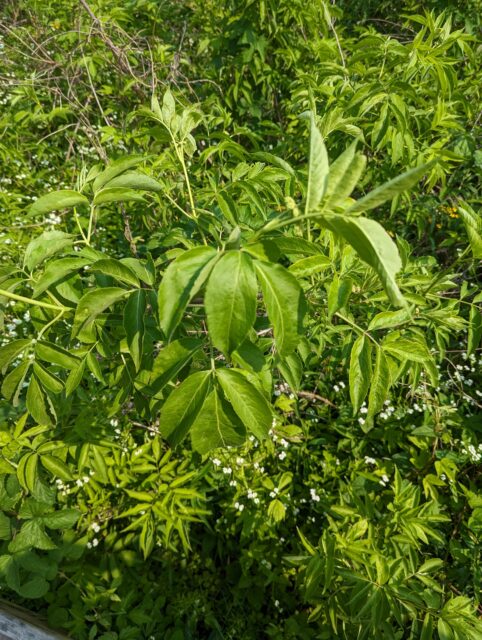
Common name: Elderberry
Scientific name: Sambucus canadensis
Common elderberry is a shrub with opposite compound leaves. It has 5-11 leaflets, and clusters of small purple, berry-like fruits. The fruits are useful in making dyes for basketry, and the stems of the shrub have been used in making flutes and whistles (NCState, n.d).
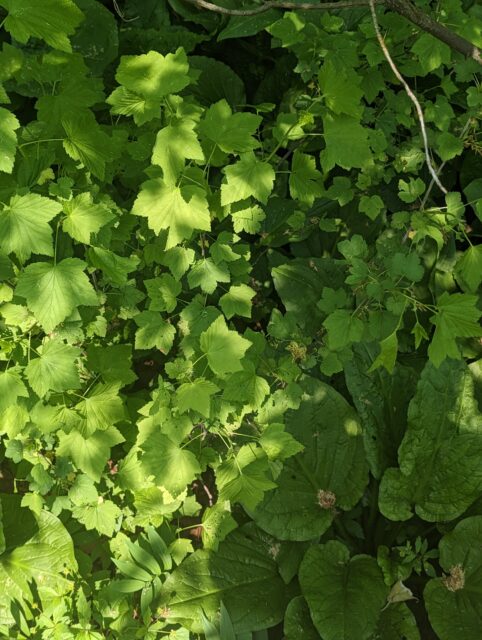
Common name: American black currant
Scientific name: Ribes Americana
American black currant is a broad-leafed bush with alternate simple leaves. The berries it produces are black and smooth, and both sides of the leaves have tiny yellow resin dots. The berries can be used in many savory and sweet foods, such as jams and syrups (planetnatural, 2022).
We were also tasked with locating four conservative species at the site.
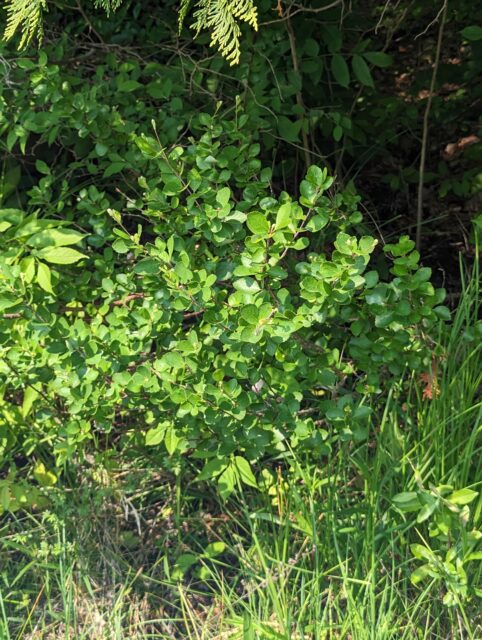
Common name: Swamp birch
Scientific name: Betula alleghaniensis
CC Value: 10
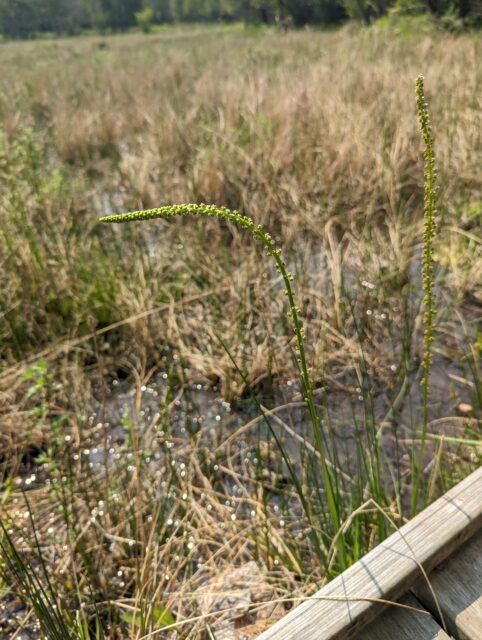
Common name: Arrowgrass
Scientific name: Triglochin maritima
CC Value: 10
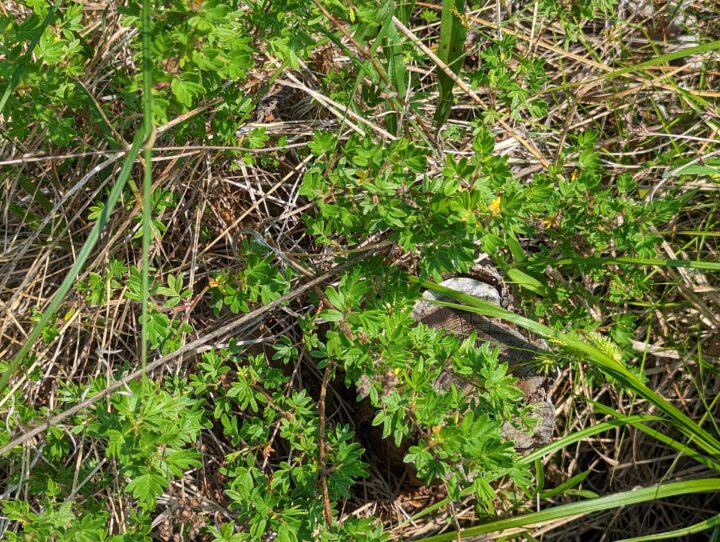
Common name: Shrubby cinquefoi
Scientific name: Potentilla fruticosa
CC Value: 10
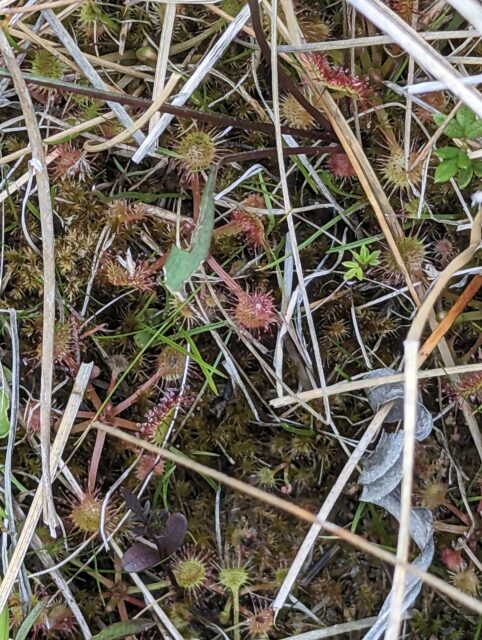
Common name: Sundew
Scientific name: Drosera rotundifolia
CC Value: 9
There were many different ash species at the site, but the two that we looked at specifically were black and green ash. Although they look somewhat similar, Black ash is a rarity often found in more wet and swampy environments, and very cool to find.
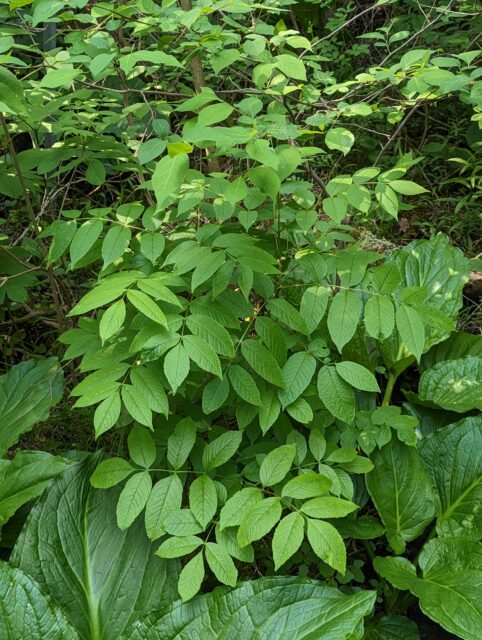
Common name: Black ash
Scientific name: Fraxinus nigra
Black Ash is a broad-leafed plant with opposite compound leaves. It has 7-11 unstalked-toothed leaves. Black ash is a valuable tree to indigenous people, as it works well for basketry, however, it is highly susceptible to the spread of Emerald Ash Borer(EABnetwork, n.d).
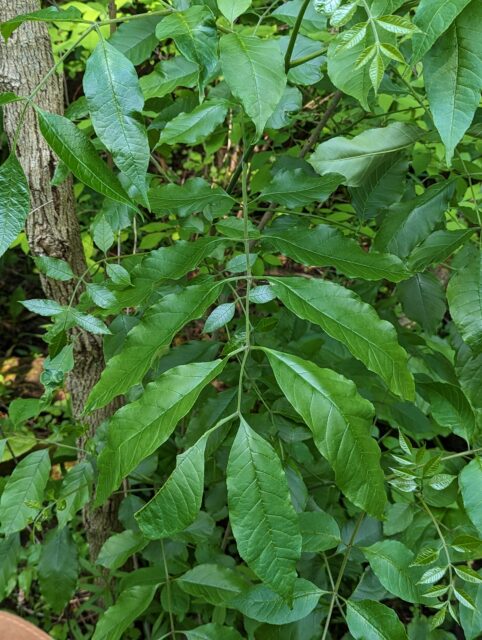
Common name: Green ash
Scientific name: Fraxinus pennsylvanica
Green Ash is a broad-leafed plant with opposite compound leaves. It has 5-9 stalked leaves that are both toothed and untoothed. The wood of the green ash is often used for canoe paddles, tool handled, and softball bats.
We also wanted to look at the FQAI of the communities at the site, as Cedar bog rates as the highest in the state.
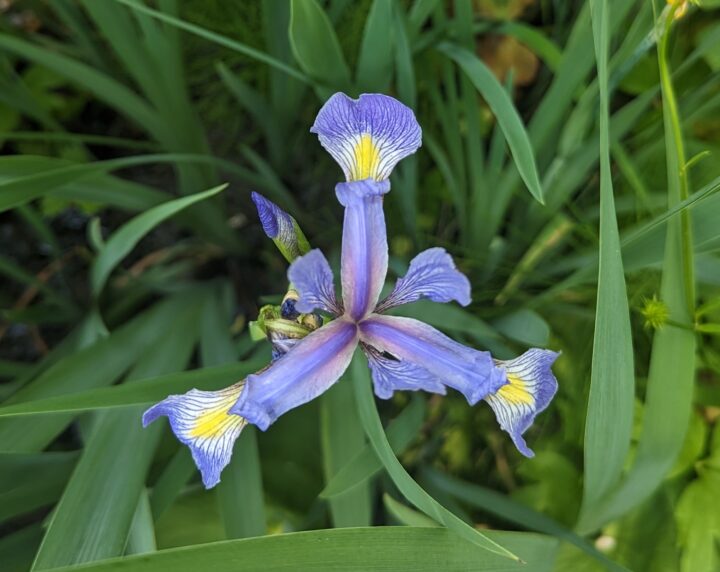
Southern Blue Flag
Swamp Forest Community
Common name: Southern Blue Flag
Scientific name: Iris Virginica
Wetland Status: OBL
CC: 6
Common name: Spicebush
Scientific name: Lindera Benzoin
Wetland status: FACW-
COC: 5
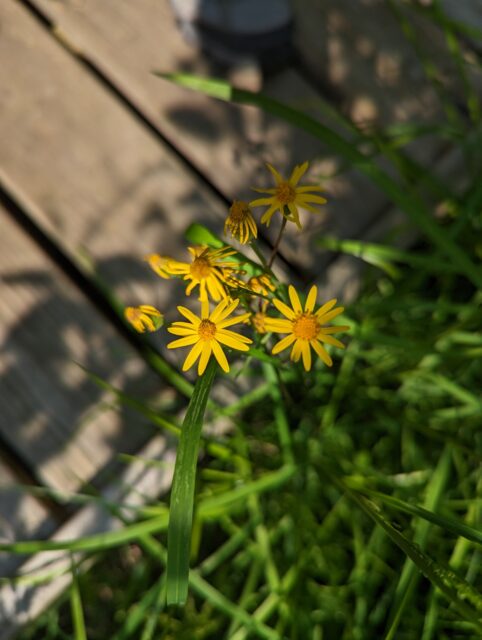
Golden Ragwort
Common name: Golden Ragwort
Scientific name: Senecio aureus
Wetland status: FACW
CC:4
Common name: Swamp Buttercup
Scientific name: Ranunculus septentrionalis
Wetland status: FAC
CC:4
Common name: Skunk Cabbage
Scientific name: Symplocarpus foetidus
Wetland status: OBL
CC: 6
Calculated FQAI for swamp forest
community: 11.18
Equation used: I = SUM(CCi )/sqrt(Nnative)
Sedge Meadow Community:
Common name: Shrubby Chinquefoil
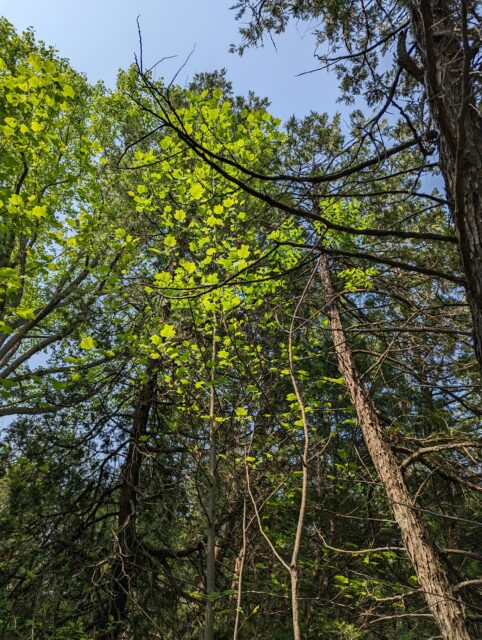
Poison Sumac
Scientific name: Dasiphora fruticosa
Wetland status: FACW
CC:10
Common name: Round-Leaved Sundew
Scientific name: Drosera rotundifolia
Wetland status:OBL
CC: 7
Common name: Swamp Birch Scientific name: Betula pumila
Wetland status: OBL
CC:10
Common name: Swamp Valerian
Scientific name: Valeriana uliginosa
Wetland status:FACW+
CC: 10
Common name: Poison Sumac
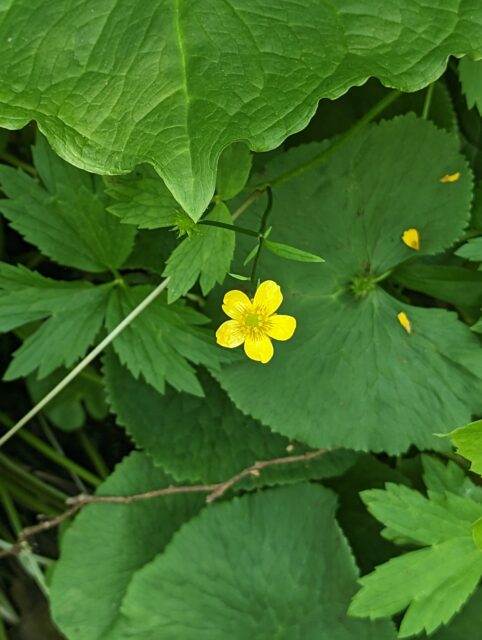
Swamp Buttercup
Scientific name: Toxicodendron vernix
Wetland status: OBL
CC:7
Common name: Lesser bladderwort
Scientific name: Utricularia minor
Wetland status: OBL
CC:8
Calculated FQAI for Sedge Meadow: 21.23
Equation used: I = SUM(CCi )/sqrt(Nnative)
Other Cool Plants!
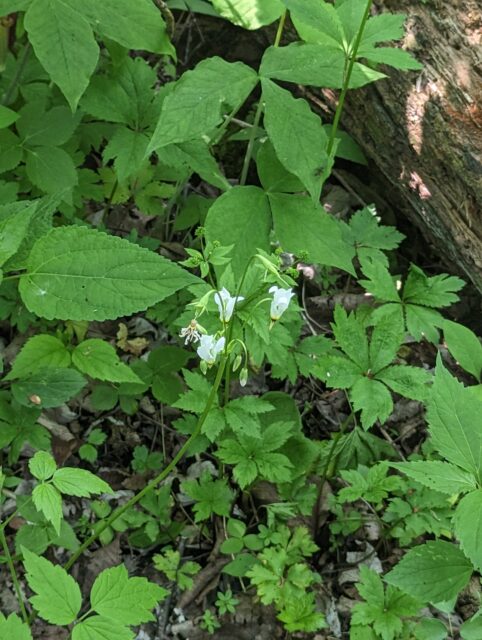
Shooting Star (Dodecatheon meadia)
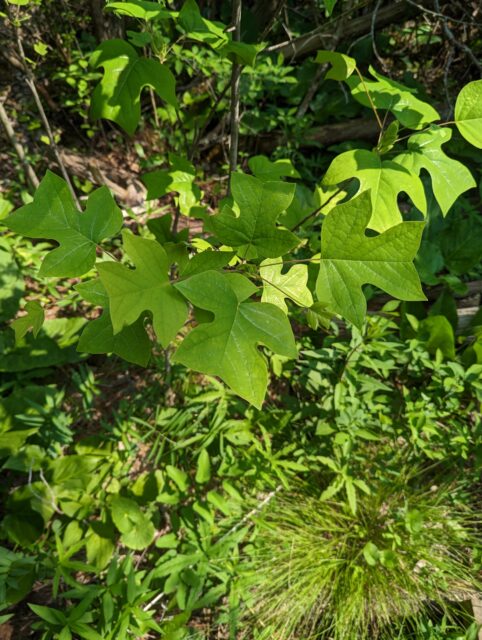
Tulip Tree (Liriodendron tulipfera)
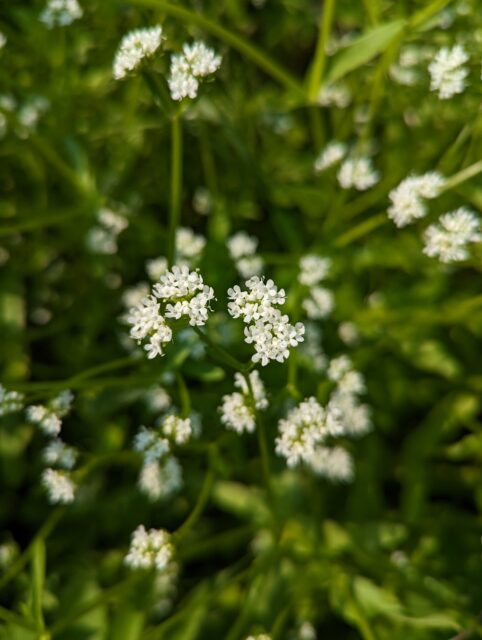
Corn Salad (Valerianella locusta)
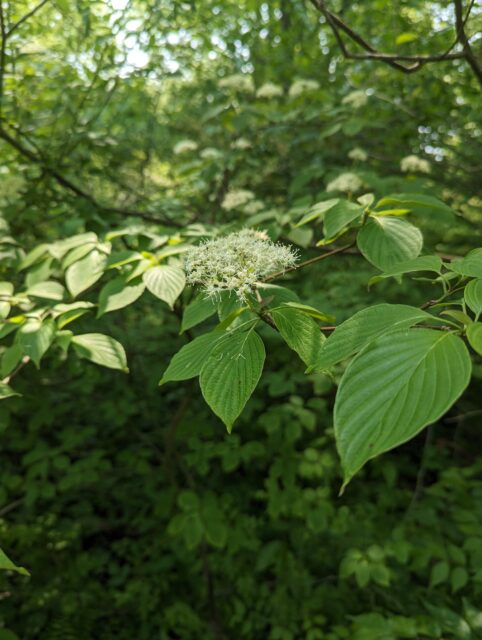
Alternate leaf dogwood (Cronus alternifolia)
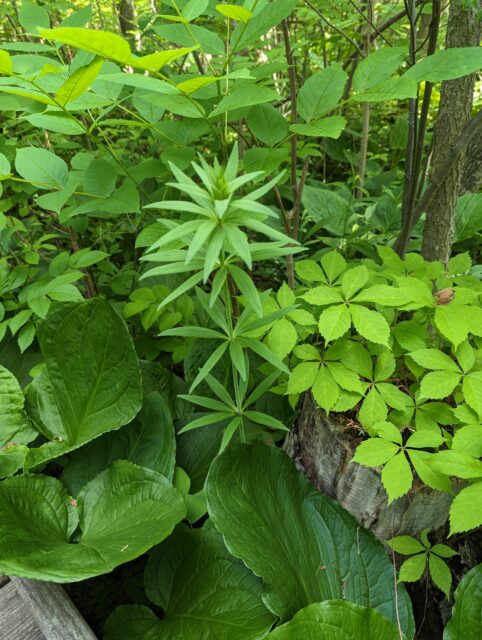
Michigan Lily (Lilium michiganense)
